
A DI box (also called direct box, direct injection, or direct input) is a transformer-based module that converts an instruments high-impedance, unbalanced signal to a low-impedance, balanced signal. To help you out in the studio or on stage, here are our nominees for the best DI box for bass and acoustic guitar.

|
Amazon Customer Reviews
|
Price: $249.99 Shop at Amazon | Shop now Read our review |
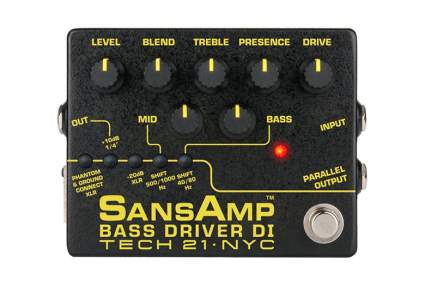
|
Amazon Customer Reviews
|
Price: $249.00 Shop at Amazon | Shop now Read our review |
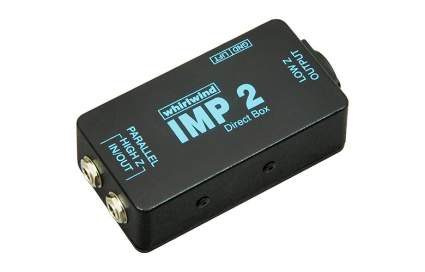
|
Amazon Customer Reviews
|
Price: $79.00 Shop at Amazon | Shop now Read our review |
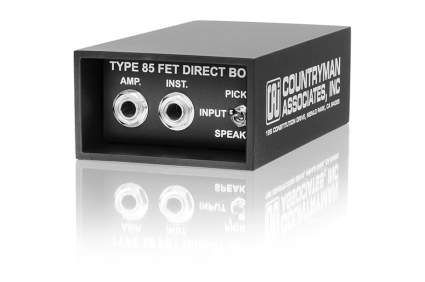
|
Amazon Customer Reviews
|
Price: $220.33 Shop at Amazon | Shop now Read our review |
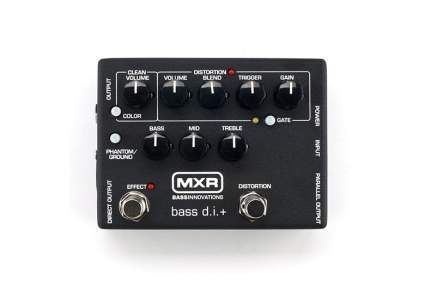
|
Amazon Customer Reviews
|
Price: $189.99 Shop at Amazon | Shop now Read our review |
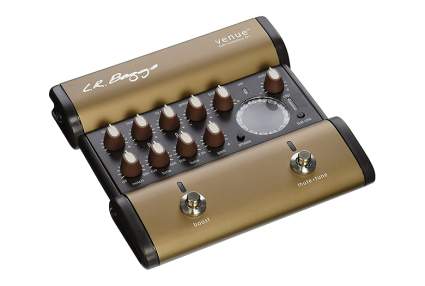
|
Amazon Customer Reviews
|
Price: $309.00 Shop at Amazon | Shop now Read our review |
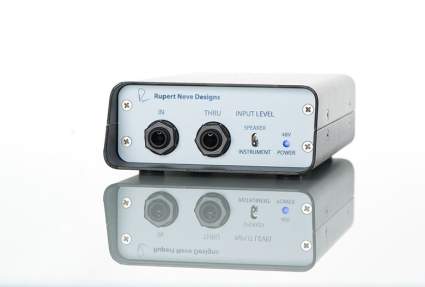
|
Amazon Customer Reviews
|
Price: $299.00 Shop at Amazon | Shop now Read our review |
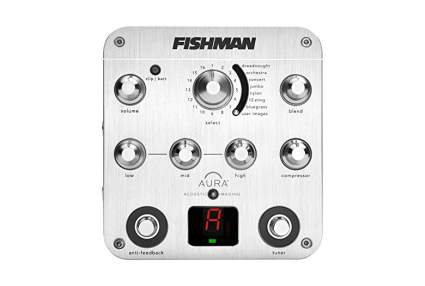
|
Amazon Customer Reviews
|
Price: $429.95 Shop at Amazon | Shop now Read our review |
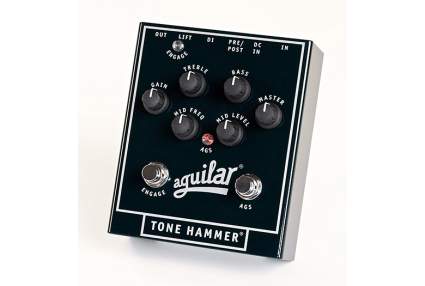
|
Amazon Customer Reviews
|
Price: $381.00 Shop at Amazon | Shop now Read our review |
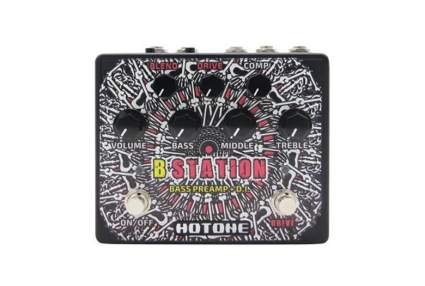
|
Amazon Customer Reviews
|
Price: $151.99 Shop at Amazon | Shop now Read our review |
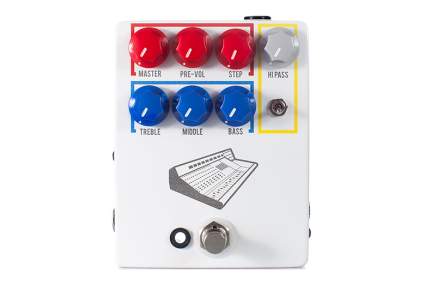
|
|
Price: $399.00 Shop now at Zzounds | Shop now Read our review |
-
1. Radial J48 MK2 48V Phantom Power Active Direct Box
Pros:- Industry standard DI box
- Merge button for left and right inputs
- Sturdy chassis
- Reverse polarity switch
Cons:- Phantom power may not provide enough push for weak pickups
- No adjustable EQ
- Could be considered pricey
Even if you’ve never heard of a DI box before, if you’ve been around musicians, chances are good that you’ve laid eyes on one of these whether you knew what it was or not. The Radial Engineering boxes are very good and come in enough flavors to satisfy nearly any player and situation.
This particular model is an active DI box, which makes it good for just about any application. As it says on the tin, it gets its power from the mixing or recording console, otherwise known as phantom power. This eliminates the need to be separately powered by its own supply while avoiding the pitfalls of passive boxes when used with low-output pickups.
Functions include a -15dB Pad switch, a ground lift, a high-pass filter, polarity reverse, and a merge button that converts the Input and Thru jacks to left and right inputs which are output to mono via the XLR. It’s designed to be high-headroom, so you won’t have the harsh clipping when driven that you might find in cheaper versions.
If you play keyboard or have active pickups, you could also consider the JDI Passive Direct Box variant. For much less, they make a basic Radial Pro Passive DI Box without the pricy Jensen transformer.
Want to save a few bucks? Try searching for this on Reverb.
Find more Radial J48 MK2 48V Phantom Power Active Direct Box information and reviews here.
-
2. Tech 21 SansAmp Bass Driver DI V2
Pros:- Fully adjustable active EQ
- Optionally powered via phantom power, DC power supply, or battery
- Parallel 1/4 inch output, effected 1/4 inch output, and effected XLR output
- Blend knob allows you to dial in perfect amount of dry or SansAmp signal
Cons:- Does not come with power adapter
- Takes some patience to dial in
- Some prefer the Para Driver variant
A DI so great, they named it after its ability to replace other amplification. The SansAmp (literally, without an amp) line has been around forever and is perfect for bassists who either don’t want to lug a bass around or can’t quite dial in the right response, no matter how much they spend on gear. This is the second version of the Bass Driver, which adds a Mid adjustment knob to the delight of just about everyone.
Aside from that, you get controls for Level, Blend, Drive, Treble, Presence, and Bass, which makes this about as amp-like as it gets in such a handy enclosure. By adjusting the Blend knob, you can determine the ratio of dry signal to pedal signal to send to the front of house, which can go a long way in emulating a variety of tones from vintage to modern.
In addition, you get a switch each for the Mid and Bass knobs, which shift the frequency response downward to account for five- and six-string basses better. There’s a +10dB button for the effected 1/4 inch out, and a -20dB button for the XLR out so you can dial it in exactly for your setup. On top of all this, this active DI box can be powered with phantom power, a separate adapter, or a 9V battery.
Some people claim to prefer the Para Driver DI for bass, though it’s more focused on acoustic guitars. Either way, the feature set and basic setup is similar, just aimed at different frequencies. If you play both, you might opt for the Para Driver.
Want to save a few bucks? Try searching for this on Reverb.
Find more Tech 21 SansAmp Bass Driver DI V2 information and reviews here.
-
3. Whirlwind IMP 2 1-channel Passive Instrument Direct Box
Pros:- Cheap
- Simple, rugged construction
- Ground lift switch
- Transformer is riveted to the chassis
Cons:- No tone-shaping options whatsoever
- Unlikely to work with passive pickups
- Very simple
The above options are all active DI boxes, and they’re priced accordingly. If you’ve got an active preamp on board your instrument, whether that’s a bass or a keyboard, it’s likely that all you’ll require is a passive DI box. As I explained at the outset, these are convenient because they get the job done without external power, and can be driven into pleasant breakup.
This simple box delivers on the cost savings, being the only option on this list under $100. The two jacks on the input side can either be used as an In and unbalanced Out for your amp, or as stereo inputs. These output into the balanced XLR on the opposite side of the box, with a ground lift switch in between.
They’re small enough to toss in a gig bag and will work with any instrument with active electronics. They’re also extremely rugged, so you don’t have to feel too precious about them.
Want to save a few bucks? Try searching for this on Reverb.
Find more Whirlwind IMP 2 1-channel Passive Instrument Direct Box information and reviews here.
-
4. Countryman DT85 Type 85 Direct Box
Pros:- Very rugged construction
- Selectable pickup or microphone settings
- Ground lift switch
- Well-loved by professionals
Cons:- No tone shaping options
- Somewhat pricey for the feature set
- Active DI won't suit all uses
Like the Radial at the top of this page, this Countryman is an indispensable professional favorite. This is an active DI that relies your choice of phantom power or a 9V battery. Using the latter, this will give you up to 400 hours of performance. It’s also made to be virtually indestructible, to the point that the product page on the company’s website features a photo of a truck driving over it.
The circuitry is class-A, and it’s meant to emulate that of a tube microphone amp. It’s billed as having a “smooth, sweet sound”, which means that it colors or improves the direct tone just slightly. That’s probably a good thing since some active DIs can have a somewhat harsh tone. Given its stature in the industry, I’d say they figured out the formula and you should strongly consider this if the Radial offerings aren’t for you.
On the other hand, that sound is fixed since there are no additional bells and whistles here; if you like the sound of these, you’re going to be very happy. If you don’t, you’ll want to look so something with more tonal options.
Want to save a few bucks? Try searching for this on Reverb.
Find more Countryman DT85 Type 85 Direct Box information and reviews here.
-
5. MXR M80 Bass D.I.+
Pros:- Separately switchable distortion gain stage
- Relatively affordable
- Optionally powered via phantom power, DC power supply, or battery
- Same output options as the SansAmp
Cons:- Noise gate can only be used with the built-in distortion
- Doesn’t have quite the same mojo as the SansAmp
- Distortion circuit useless if you only play clean
For roughly $60 less than the SansAmp, MXR has its own version that is pretty similar — with the notable addition of a distortion channel. Where on the SansAmp you have frequency shifts, the MXR provides a Color button, which is especially useful for slap.
Controls on this unit include separate Effect and Distortion switches, a three-band EQ, and separate Volume controls for the Clean and Distortion channels. The Color switch effects only the Clean channel, while the Gate switch effects only the Distortion. The Blend knob changes the ratio of clean to dirty signal, the drive of which is controlled with the Gain knob. The Trigger knob sets the sensitivity of the Gate when engaged.
If you like the SansAmp but want more drive, this could be the DI for you. As a bass DI, it’ll do the job effectively for pretty cheap money. As a bass driver, though, it should be noted that the Electro-Harmonix Deluxe Bass Big Muff Pi is even cheaper, though the distortion channel is essentially the whole package.
Want to save a few bucks? Try searching for this on Reverb.
-
6. LR Baggs Venue DI Acoustic Guitar Effect Pedal
Pros:- All-in-one acoustic guitar performance solution
- Effects loop
- Five-band EQ
- Built-in tuner and boost
Cons:- Tuner on the slow side
- Some find it to be overpriced
- Occasional build quality complaints
Calling this an effect pedal is a little reductive. This unit allows for complete control of virtually every parameter en route to supplying DI signal to the recipient console. The feature set rounds this out a bit more than other options, which makes it worth the price, in my opinion (though some disagree).
Instead of a three-band EQ, with the Venue you get a five-band. Within that, there are two Tune knobs to control the sweep of the Low-Mid and High-Mid bands for further tweaking. The Notch knob provides finite feedback control, and a Gain knob controls preamp gain. There’s a foot-switchable Boost function, which is adjustable on the back panel from zero to nine dB of boost. Like the Hotone above, this also features an effects loop. The other switch controls a Mute, which triggers the built-in tuner. There’s a ground lift switch and a phase inversion switch. It can be run on an adapter or a 9V battery, the latter of which takes advantage of a Battery Check gauge. That same gauge works as a Clip meter the rest of the time, allowing you to see how your gain is set.
If the price of this one is a bit high for you and you prefer other tuners, the company also makes a Para Acoustic DI, which is about $100 less. You could also go for the newer Align Series Active DI, which foregoes EQ options for a straight-up, high-quality DI.
Want to save a few bucks? Try searching for this on Reverb.
Find more LR Baggs Venue DI Acoustic Guitar Effect Pedal information and reviews here.
-
7. Rupert Neve Designs RNDI Active Transformer Direct Interface
Pros:- Extremely clean and vibrant
- Class A design
- Noted for preserving harmonic content
- Created by a legendary audio designer
Cons:- Somewhat pricey
- Relatively limited feature set
- Won’t produce driven tones
- Only phantom powered
A fawning emulation is nice, but what if you could get a DI box from the man who designed the Neve console himself? Well, you can. This minimalistic package contains the same genius that Rupert Neve brought to bear on the high-quality vintage recording solutions that made many records famous.
This unit is laser-focused on preserving precisely the sound of your instrument no matter the environment. Though it doesn’t have the feature set of modern pedal-style DIs, the real magic to this is the preservation of 2nd order harmonic content, which is perceived as being rich and detailed, even after long cable runs.
Using the Speaker/Instrument switch, you can use this before or after your bass amp, depending on your setup. Other than that, you get a ground lift switch and the XLR output. It requires phantom power to work. Simple, high-quality tone preservation for any setting.
Want to save a few bucks? Try searching for this on Reverb.
Find more Rupert Neve Designs RNDI Active Transformer Direct Interface information and reviews here.
-
8. Fishman Aura Spectrum D.I.
Pros:- Aura imaging algorithms provide superior flexibility
- Three-band EQ plus compressor
- Built-in tuner
- Excellent feedback reduction
Cons:- Imaging options may be somewhat fussy for most players
- Pricey
- Won’t work with phantom power and an adaptor is not included
- Limited application for nylon stringed guitars
The Fishman Aura system has been around for quite awhile now, and is basically an algorithm that uses recordings to emulate the sound of a pristine studio recording in any atmosphere. Once you take the time to dial it in to the sound of your guitar, you’ll have far above average sound imaging for your front of house person.
Controls on this stompbox-style unit include the Acoustic Imaging selector, which gives you an option of 128 pre-loaded images, as well as a bank of 16 user images, which can be downloaded and tweaked with the included software.
There’s a knob each for Volume, Blend, and Compression, along with a three-band EQ. The Anti-Feedback switch is a phase reverser, and the other controls a built-in tuner. There’s also an effects loop, for those of you putting a touch of chorus in your mix.
Want to save a few bucks? Try searching for this on Reverb.
Find more Fishman Aura Spectrum D.I. information and reviews here.
-
9. Aguilar Tone Hammer Bass EQ Effect Pedal
Pros:- Adaptive Gain Shaping lets you match gain structure to your pickups
- Four-band EQ
- Optionally powered via phantom power, DC power supply, or battery
- Switchable gain stage
Cons:- No power adapter included
- Not as tweakable as other options
- Two-battery power supply option could be more annoying than anything
Last I heard, Ed Gerhard, a very talented, very detail-oriented fingerstyle acoustic guitar player, was using an Aguilar DB 900 DI box for his live performances. I’ve seen it in person, and his tone is always astonishing.
For the modern bass player, Aguilar have developed a compact pedal to address their DI box needs. It’s even smaller than the MXR option, but provides a very similar feature set. The four-band EQ allows for a very finely-tuned midrange.
The gain stage is a proprietary design called Adaptive Gain Shaping, which allows you to carefully dial it in for a variety of pickups. There’s a Master level knob and a ground lift, and the unbalanced output can drive a power amp in addition to the XLR out to the mixer.
If you’ve got just a little more to spend on the ultimate in pedal-based bass DIs, you might also consider the Darkglass Microtubes B7K Ultra, which might be the ultimate refinement of the genre.
Want to save a few bucks? Try searching for this on Reverb.
Find more Aguilar Tone Hammer Bass EQ Effect Pedal information and reviews here.
-
10. Hotone B Station Bass Preamp/DI Pedal
Pros:- Built-in optical compressor
- Three-band EQ
- Effects loop that can be moved before or after EQ
- Soft-touch switching
Cons:- Polarizing graphic design
- Lacks the pedigree of some other options
- No noise gate
- Can’t be powered with phantom power
Falling between the MXR and SansAmp options, relative newcomer Hotone has an entry in the DI box market now, too. It follows a bit more closely to the MXR with the inclusion of the foot-switchable Drive channel. It stands out, however, because of a few unique features the other two don’t have.
The first notable inclusion is an FX Loop. Not all bassists play with pedals, but if you do, this could be the thing that sets this apart from the rest. The loop itself can be either pre or post EQ, depending on what you prefer. Like the MXR, the drive channel has a Blend knob in addition to the Drive (or gain).
Otherwise, you get Volume, a three-band EQ, and a Comp knob for controlling the built-in optical compressor. In addition to the same three outputs as the SansAmp and MXR, there’s a dedicated headphone jack for practice. The switches are both soft-touch, giving it that modern pedal feel. One possible downside is that it must be powered by 9V battery or adapter — no phantom power option here.
I received one of these units to test and I was definitely impressed. I used it in a home recording situation with a mid-90s MIM Fender Jazz Bass along with a handful of pedals. It especially suits me because I’m a guitar player first, which means I have a large pedalboard (as I discussed here), so I could make use of the loop.
I found that it helps make the litany of bass amp models available on your favorite DAW even more usable. This is certainly worth a look. If you’re looking for something for acoustic, Hotone also offers the A Station, which can be used on just about any acoustic instrument.
Want to save a few bucks? Try searching for this on Reverb.
Find more Hotone B Station Bass Preamp/DI Pedal information and reviews here.
-
11. JHS Colour Box
Price: $399.00Pros:- Works well with bass, acoustic, voice, or keyboard
- Very compact size
- Vintage Neve preamp design
- Unique drive options
Cons:- Not as many output options as other units
- Requires 18v power
- No ground lift
- May have a relatively narrow focus
With the advent of the great vintage recording consoles in the 60s, bands started plugging everything directly in and pushing the analog circuitry to its limits to uncover new, more interesting tones. Preeminent among them was the Neve console, designed by Rupert Neve. Many classic and kind of crazy tones were achieved this way, and JHS has taken it upon themselves to encapsulate that functionality in a small DI box-style pedal.
The Color Box is essentially two Neve console preamps cascading into one another. That gives you the warm, clean tones you’d want for any instrument directly to the console at the venue or recording studio. There’s a three-band EQ, a Master volume, and a switchable Hi Pass filter.
The Pre-Volume works as a gain knob, which sets the level cascading into the second stage, which is where the delightfully weird breakup options live. The Step Gain knob increases the gain of both preamps across five settings: 1. 18dB, 2. 23dB, 3. 28dB, 4. 33dB, and 5. 39dB. The higher you go, the crazier the distortion gets, all the way through crackly, destroyed fuzz. You needn’t use that part at all, though, and otherwise, this is a vintage-inspired preamp that will satisfy your direct-in needs.
The V2 just came out, but you can pick up a like-new V1 unit on Reverb.
The first part of our tone comes from the instrument itself. You choose your guitar based on a mixture of comfort, suitability, and what your ears hear when you play it. Everything that comes after the instrument itself essentially equates to an amplifier in one respect or another — or in other words, a make-louder device.
After that, you might toss a few pedals in the chain before eventually plugging into your amplifier. With acoustic guitars, this is even simpler: from the first second you touch that guitar, that's the sound. That is now the essence of your tone.
Once you have that sorted, however, you will pretty quickly find yourself in a situation where either you need to record or play to a room of soon-to-be adoring fans. This is similar to the concept of the last mile in telecommunications in that it can prove to be the most problematic part if not addressed properly. If you're an electric guitar player, you're probably in good shape for the most part. Basses and acoustics, on the other hand, require a bit more consideration at this step.
Mixing consoles require the balanced, mic-level input signal, and long XLR cable runs don't alter your tone the same way guitar cables do. This means a host of benefits: removes hum, reduces feedback, provides full range EQ, and flexibility for mixing. Players using rack gear will also benefit in a lot of cases.
Due to their resonance, acoustic guitars need more isolation than other instruments on stage. In most cases, playing an acoustic through a traditional guitar amp will result in uncontrollable feedback once reaching show volume. Usually, electric guitar amps are voiced for their instrument or at least for a certain mid-focused range, which means that the full breadth of the acoustic guitar's tone is less likely to translate.
What Is a Bass DI Box?
As for bass, it takes far more power for the frequencies of the instrument to be heard, which makes amplifying them difficult. Bass cabs aren't the most easily mic'd things on Earth, and by the time the sound person has it turned up high enough to hear, chances are good that all other sorts of noise will creep in, too. Getting a clean signal to the mixing board can significantly improve the tone, which will move you closer to the sound you hear when playing at home.
In both cases, recording can be difficult. The best recordings rely on the microphone placement and the sound of the room. If you're no expert or you have a very weak-sounding room, you may not be able to translate the tone to the recording. For both performance and recording alike, pairing stage or acoustic sound with the output of a DI box will make life easier.
What Is a Passive DI Box?
There are two different kinds of DI box. The first is passive, which performs the transformer action with no need for power. These are excellent for just about every use because they don't add anything in the way of complexity to your rig. Stick them inline, send a signal to your amp and to the front of house, and you're done. By their very nature, they're not sensitive to ground hum or interference, the latter of which is thanks to transformer shielding on good quality units.
The major downside of passive DI boxes is that they can load low-output passive pickups. This includes the single-coils on just about every Fender bass out there. This results in lower output to the amp and can be detrimental to your tone.
What Is an Active DI Box?
That led to the development of the second kind of DI box, active DI boxes. Using either a 9V battery, power adapter, of phantom power from the mixing console, active DIs don't load the pickups at all and also act as preamps to drive more signal. Aside from the need to power them, another downside is that they don't breakup in a pleasant, musical way when driven the way passive DIs do.
Virtually all of them have a switch for a ground lift, which provides its own path to ground when the outlet you're plugged into is lacking. This will often eliminate all hum instantly. Most of the time, you're fighting the room you're playing in for control of your tone and this simple switch makes it much easier.
Additionally, the direct, clean input makes your soundperson's life easier, which will lead to you sounding better. If you want to read on about why DI is great, Aaron Rogers at EarthQuaker Devices did a nice writeup here.
See Also: